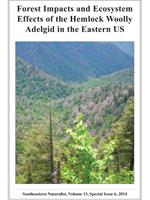Laricobius osakensis (Coleoptera: Derodontidae) was imported from Japan to the United States in 2006 for study in quarantine facilities as a potential biological control of Hemlock Woolly Adelgid. Laricobius osakensis was released from quarantine in 2010, but it was soon discovered that the colony also contained a cryptic species, Laricobius naganoensis. This led to the placement of L. osakensis back into quarantine and development of a method to purify the colony. To distinguish the two species, we designed a restriction fragment length polymorphism (RFLP) assay using mitochondrial DNA sequences and developed a non-lethal testing method. Twenty-one diagnostic nucleotide sites separated the two species, and they both exhibited extraordinary intra-specific haplotype diversity. Sequencing the ITS2 nuclear region did not produce evidence of hybridization between the species in the field or in the lab colony. Splitting the colony into small groups and testing their species composition was successful in isolating L. osakensis. Efforts should be made to maintain high genetic diversity in L. osakensis colonies. Continued genotyping of new colony stock will be necessary to fully characterize the diversity within both species.
How to translate text using browser tools
1 January 2014
Contamination Delays the Release of Laricobius osakensis for Biological Control of Hemlock Woolly Adelgid: Cryptic Diversity in Japanese Laricobius spp. and Colony-Purification Techniques
Melissa J. Fischer,
Nathan P. Havill,
Carrie S. Jubb,
Sean W. Prosser,
Brent D. Opell,
Scott M. Salom,
Loke T. Kok
ACCESS THE FULL ARTICLE

Southeastern Naturalist
Vol. 13 • No. 6
July 2014
Vol. 13 • No. 6
July 2014




